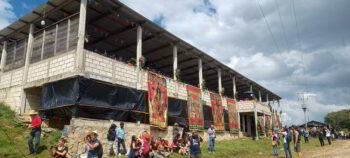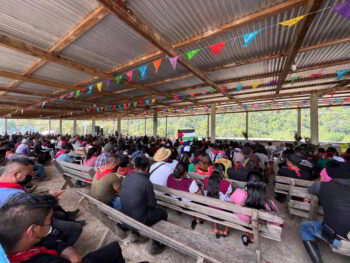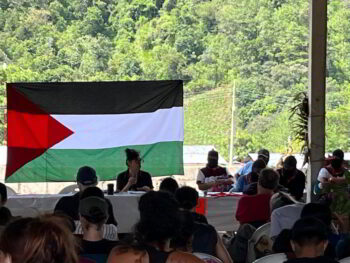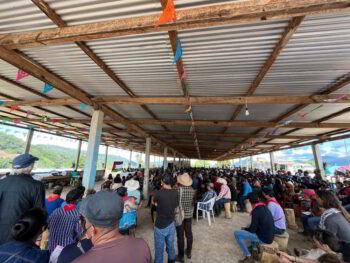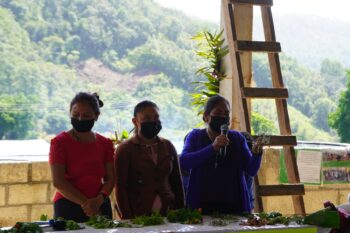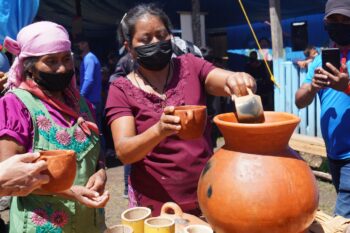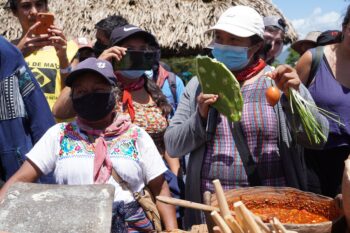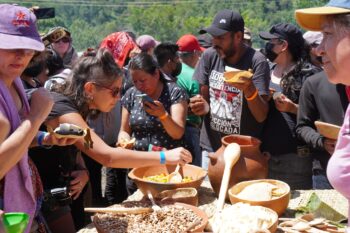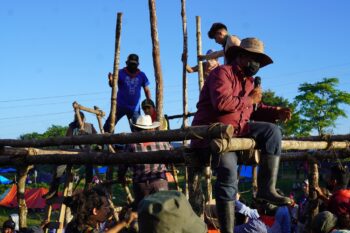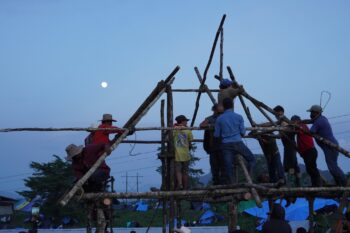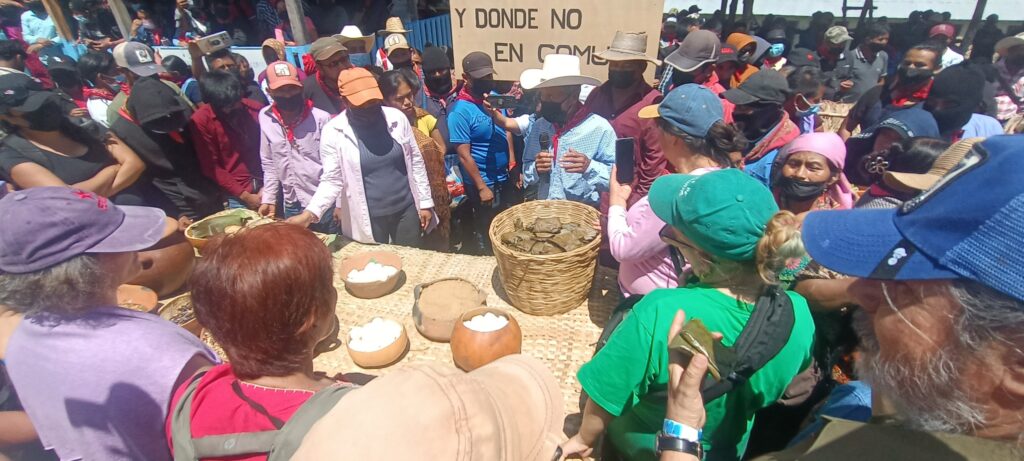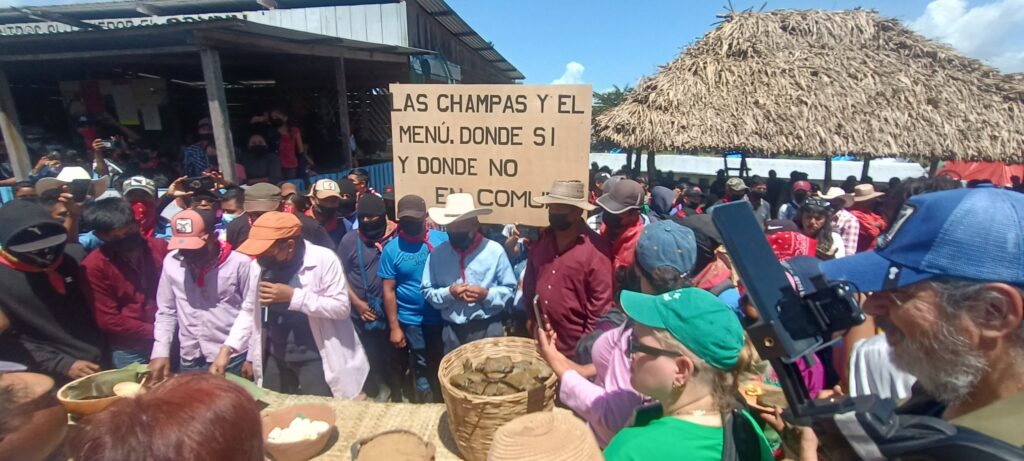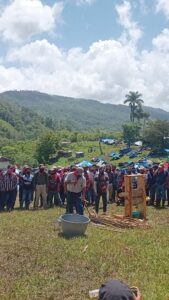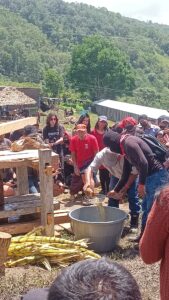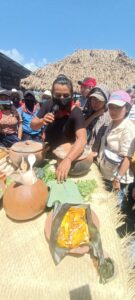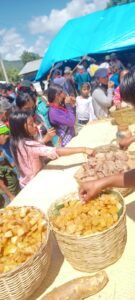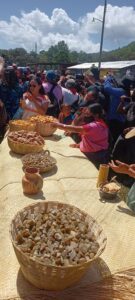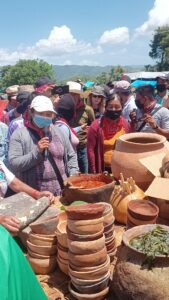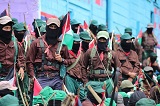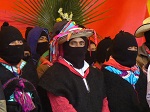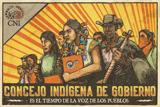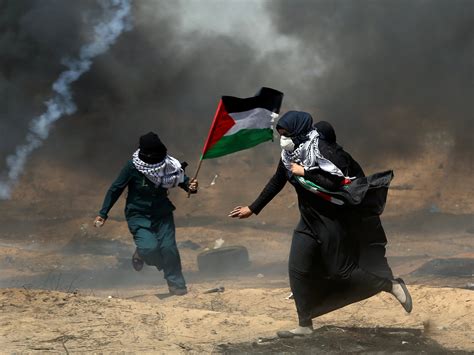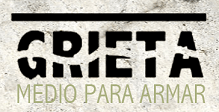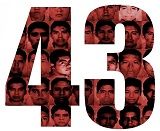Día 9 – Encuentro de Resistencias y Rebeldías “Algunas partes del todo”
La defensa de la tierra y el territorio, la agroecología y el cuidado de la Madre Tierra, la lucha de las y los buscadores ante el terror de la desaparición forzada y el terrorismo de Estado, solidaridad con Palestina y con los pueblos de nuestra América, comercio justo y solidario, luchas sindicalistas, las prácticas del “común”, la transformación mediante el arte. Estos son algunos de los ejes de las pláticas que escuchamos este noveno día del Encuentro de Resistencias y Rebeldías “Algunas partes del todo”, que se lleva a cabo en el semillero Comandanta Ramona del Caracol de Morelia.
De Puerto Rico, la Colectiva Agroecológica de Masificación y Unidad (CAMU) compartió su lucha por la soberanía alimentaria y la defensa del territorio ante la dependencia generada como colonia del imperialismo estadounidense. En Australia, la Red de Solidaridad con los Pueblos Latinoamericanos (LASNET) habló de sus esfueros en solidaridad con diversos pueblos en lucha en América Latina, y Palestina Libre Melbourne compartió su lucha en solidaridad con el pueblo palestino. Desde Italia, la Asamblea transterritorial, transfeminista y antiespecista Corpi e Terra compartió su lucha por la justicia ambiental. La Unión Sindical de Base empezó su ponencia con palabras en solidaridad con Palestina, antes de compartir su lucha por las y los trabajadores en Italia. En Bélgica, un colectivo en la ciudad de Lieja creado en 2006 tras la Sexta Declaración se organiza para distribuir café de las cooperaativas zapatistas. En Alemania, Commons Institut es una red que se organiza para construir el común desde la investigación científica, la enseñanza y la práctica activista. En Italia, la Associazione Ya Basta! Êdî Bese! trabaja desde 1996 en solidaridad con los pueblos en lucha en Chiapas, con proyectos de cooperación internacional, la promoción de estudios culturales y la redacción de artículos divulgativos e informativos.
En el Estado de México, el Colectivo Uniendo Esperanzas reune familiares de personas desaparecidas. A partir de testimonios personales de desaparición y asesinato, las compañeras nos cuentan su incansable lucha ante el dolor indescriptible de la desaparición forzada y el asesinato. En Oaxaca, la Asamblea de Pueblos del Istmo en Defensa de la Tierra y el Territorio (APIDTT) es una organización comunitaria de base integrada por asambleas y autoridades; indígenas, tradicionales y agrarias, asambleas en resistencia civil, colectiv@s y cooperativas indígenas de la región del Istmo de Tehuantepec, que trabaja en la defensa de la tierra y el territorio, contra los megaproyectos y por el fortalecimiento del común. Desde hace 20 años, la Juventud Comunista de México trabaja por la transformación a partir del socialismo. La Red de Apoyo Iztapalapa Sexta (RAIS), creada a partir de la creación del Concejo Indígena de Gobierno (CIG), está compuesta por colectivos y organizaciones adherentes a la Sexta Declaración, que luchan por la construcción de otros mundos con una gran diversidad de acciones.
Compartimos aquí las palabras de este noveno día del encuentro.
Colectiva Agroecológica de Masificación y Unidad – CAMU (Puerto Rico) (Descarga aquí)
Uniendo Esperanzas / Glorieta de las Mujeres que Luchan (Descarga aquí)
Justicia para Eury Roy (Descarga aquí)
Asamblea de Pueblos del Istmo en Defensa de la Tierra y el Territorio (APIDTT, Oaxaca) (Lee el documento leído por la APIDTT aquí) (Descarga aquí)
Juventud Comunista de México (Descarga aquí)
Red de Solidaridad con los Pueblos Latinoamericanos – LASNET (Australia) (Descarga aquí)
Palestina Libre Melbourne (Australia) (Descarga aquí)
Asamblea Corpi e Terra Ni Une Meno (Italia) (Descarga aquí)
Red de Apoyo Iztapalapa Sexta – RAIS (México) (Descarga aquí)
Unión Sindical de Base – USB (Italia / Sicilia) (Descarga aquí)
Colectivo de Café en Liège (Bélgica) (Descarga aquí)
Commons Institut (Alemania) (Descarga aquí)
Associazione Ya Basta! Êdi Bese!, Centros Sociales del Noroeste (Italia) (Descarga aquí)
Foto de portada: Radio Pozol



